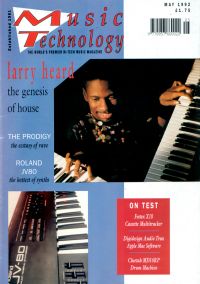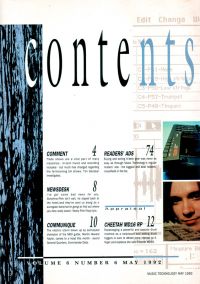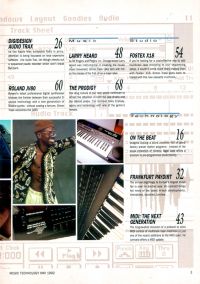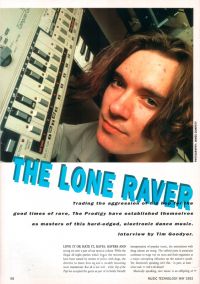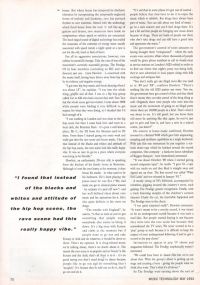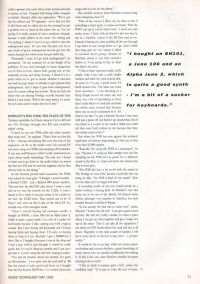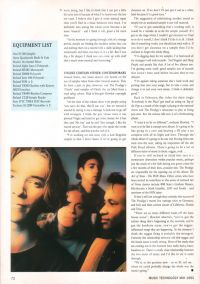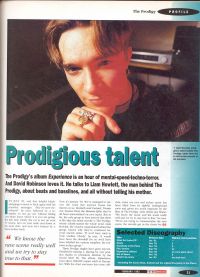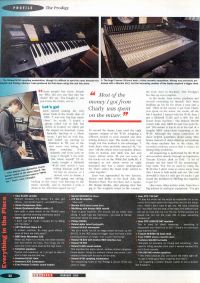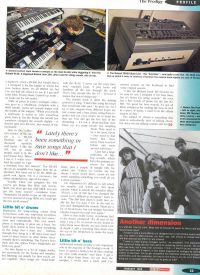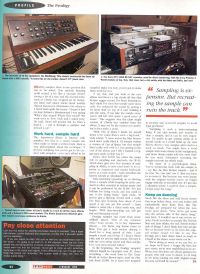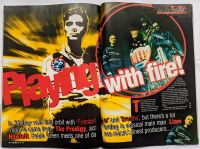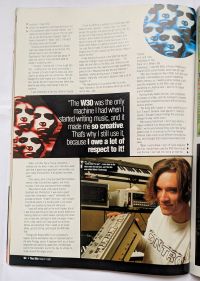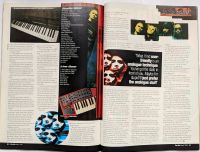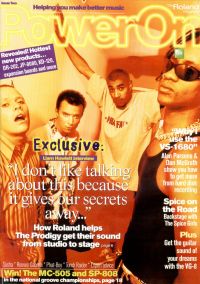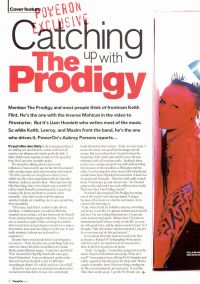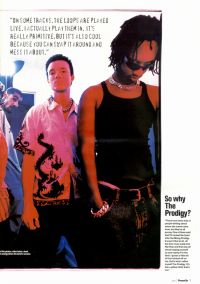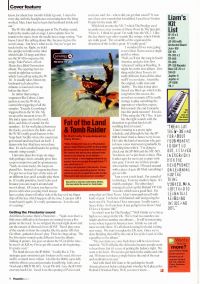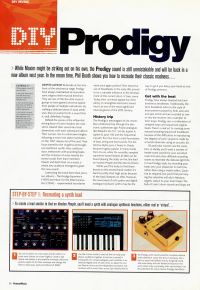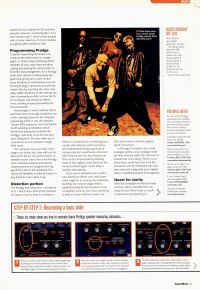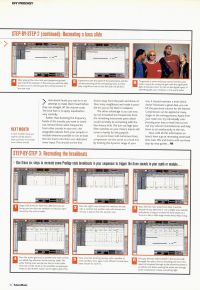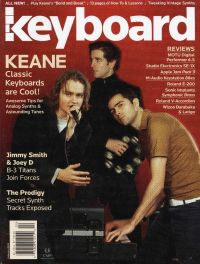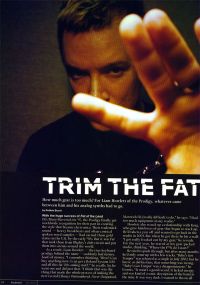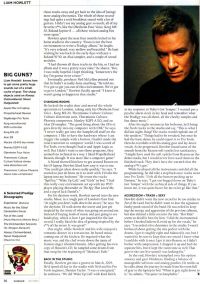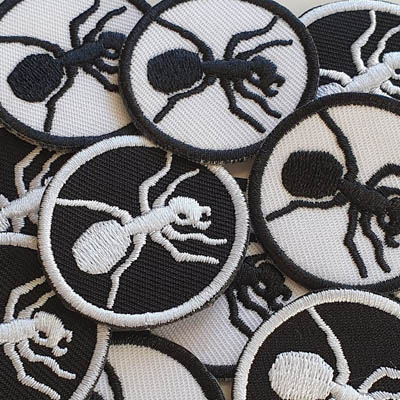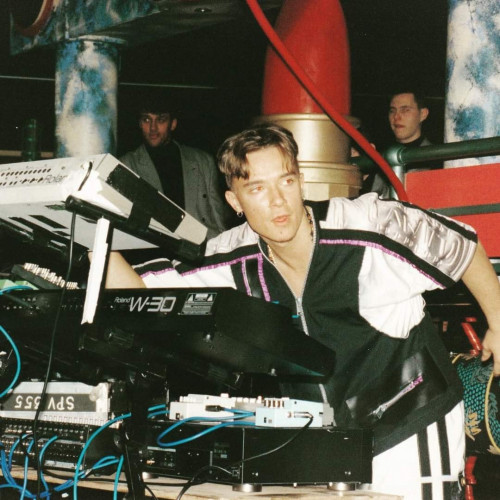Equipment
Liam Howlett’s synths and gear in studio and live.
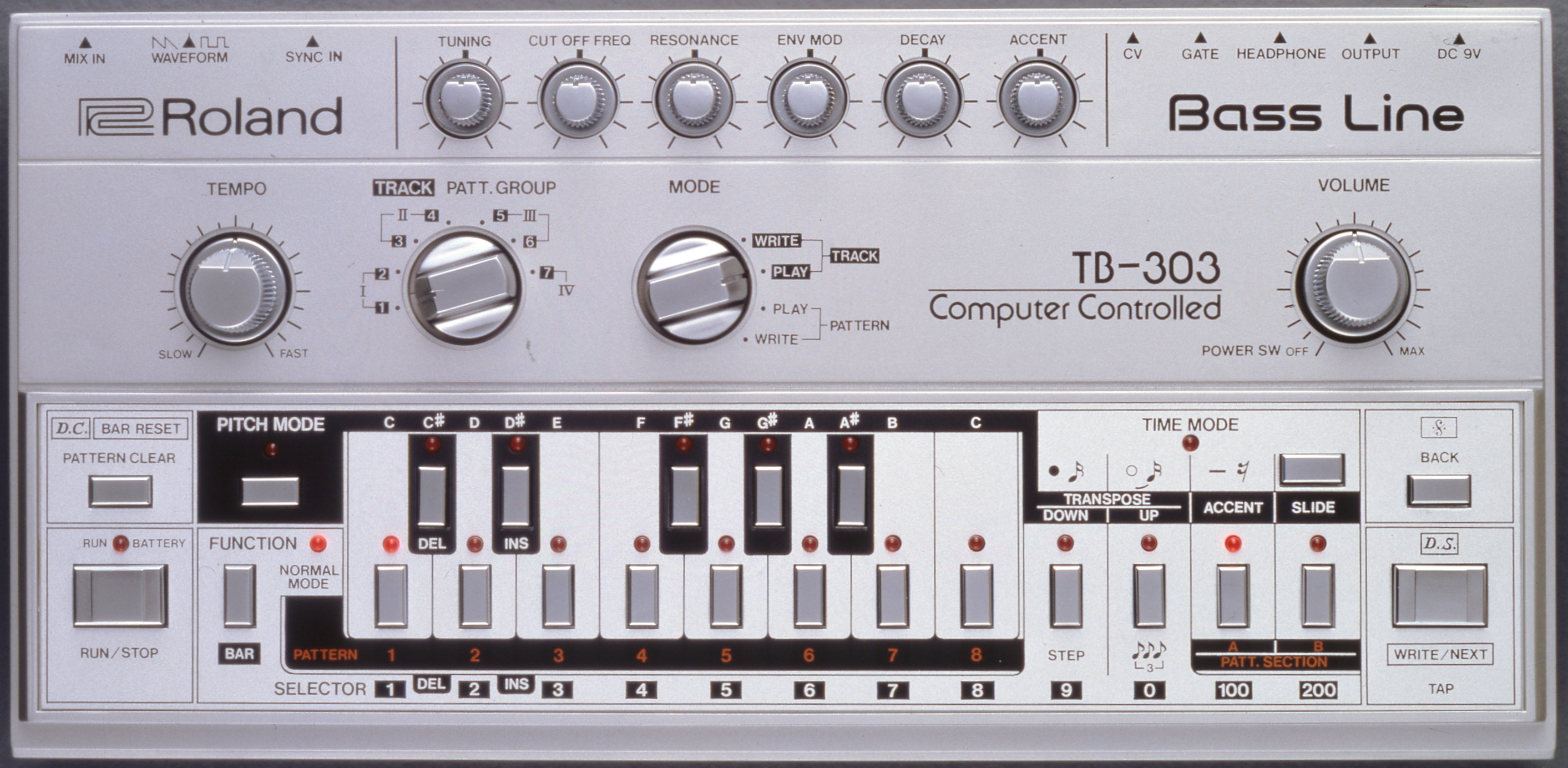
Roland TB-303 Bass Line
Release Date:1982
Price: $1200 (about)
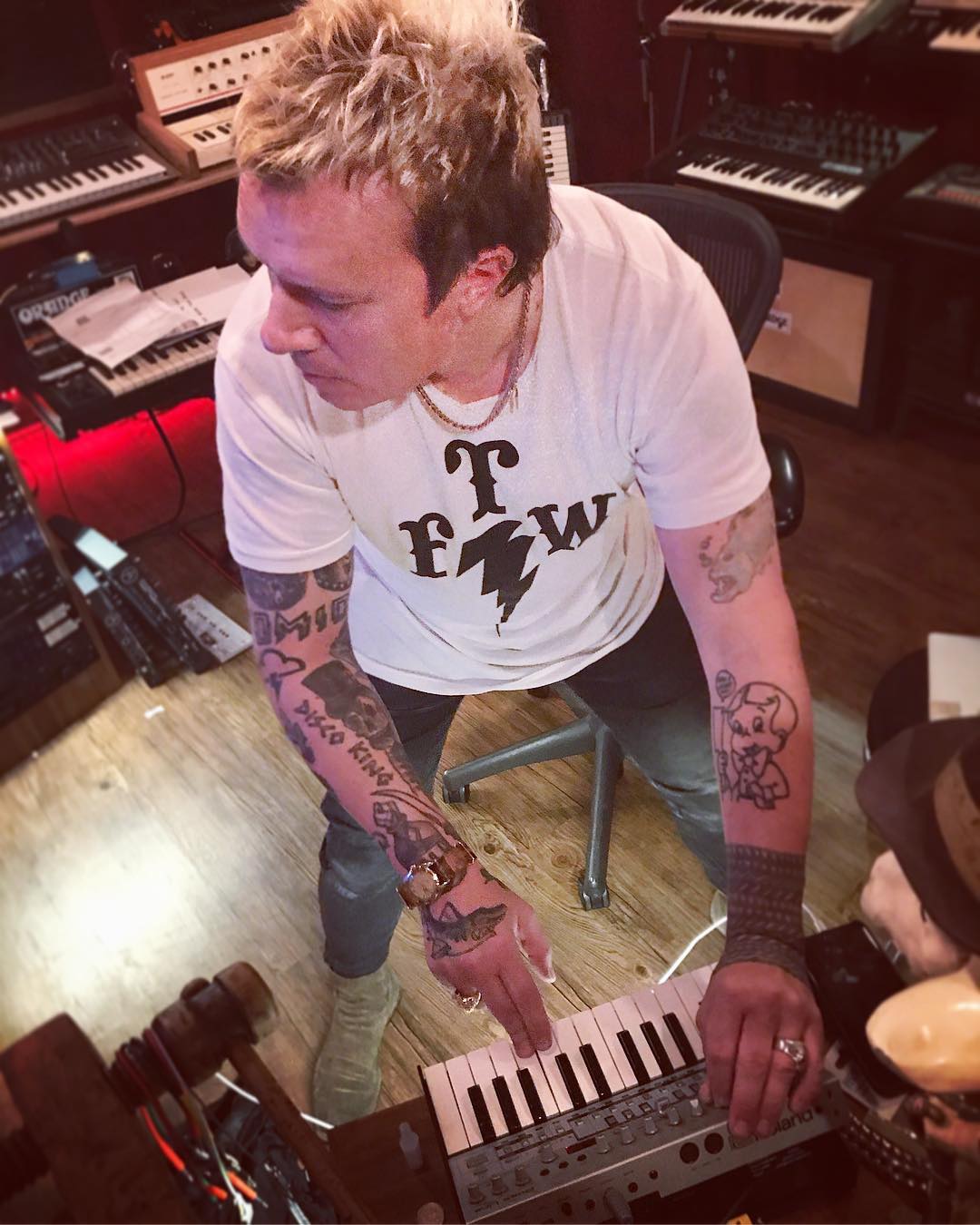
Liam at studio August 2017. "I never programme the 303 like an accountant pressing buttons, fuk that... , i play the shit live onto the tracks".
(He is actually using a Roland TB-03 here)
This little silver box is the worlds most famous acid machine!
The Roland TB-303 is a synthesizer that was first introduced by Roland Corporation in 1982. It was originally designed as a bass synthesizer and accompaniment machine for guitarists, it was a commercial failure and was discontinued in 1984.
However, cheap second-hand units quickly found their way into the hands of electronic music producers and DJs, becoming a popular tool for creating electronic dance music. Its "squelching" or "chirping" sound became a foundation of electronic dance music genres such as acid house, Chicago house and techno.
The TB-303 was designed by Tadao Kikumoto who also designed the Roland TR-909 drum machine. It was marketed as a "computerised bass machine" to replace the bass guitar and designed to mimic the sound of a bass guitar, with a built-in sequencer that could be used to create simple basslines and chord patterns. However, according to Forbes, it instead produces a "squelchy tone more reminiscent of a psychedelic mouth harp than a stringed instrument".
The TB-303 has a single oscillator, which produces either a "buzzy" sawtooth wave or a "hollow-sounding" square wave and a built-in low-pass filter that could be used to shape the sound. The synthesizer also featured a built-in distortion circuit that could be used to create a gritty, overdriven sound. User can also program notes and slides using a basic sequencer.
Despite its relatively simple design, the TB-303 quickly became popular among electronic musicians and DJs. This was due in part to its affordability, as well as its compact size and portability. But it was also due to its unique sound, which was characterized by its sharp, acid-like tone and its ability to create complex, evolving patterns.
One of the main reasons why the TB-303 became so popular among electronic musicians was its versatility. It could be used to create a wide range of sounds, from deep, throbbing basslines to squelchy, acidic leads. Its built-in sequencer allowed musicians to create complex patterns and grooves, which could be used as the foundation for entire tracks. Additionally, the TB-303's compact size and portability made it a popular choice for live performances and DJ sets.
The TB-303's popularity reached its peak in the early 1990s, with the rise of Acid House and Acid Techno. These genres of electronic dance music were characterized by their use of the TB-303's unique sound, and many of the tracks produced during this time were built around the TB-303's distinctive acid basslines.
Since its release, the TB-303 has been a staple in electronic music production. Its unique sound has been used in a wide range of electronic music, from Acid House and Acid Techno, to Acid Trance and Acid Breaks. It's also been used in many other genres such as techno, house, and even hip hop. It has been used by a wide range of musicians, from underground DJs and producers to mainstream pop stars, and it continues to be a popular tool for creating electronic dance music today.
Although Roland stopped production of the TB-303 in 1984, it has remained popular due to its unique sound and its role in the development of acid house and techno. Many modern-day musicians continue to use the TB-303 in their music production and live performances. There are also many software and hardware emulations of the TB-303 available, allowing modern musicians to use its sound in their productions.
In conclusion, the Roland TB-303 is a synthesizer that played a significant role in the development of electronic dance music. Its unique sound and versatility made it a popular tool for creating complex patterns and grooves, and it continues to be used by musicians today. Its impact on electronic music is undeniable and it's considered a classic piece of gear in electronic music production. Its legacy will continue to be felt in electronic music for years to come.
Liam Howlett have had several of these over the years. There has been at least two competitions with Liams 303 as a prize for winner. I bet he still has at least one as a spare. He has it connected to the Kenton MIDI Box which converts the CV signal into MIDI.
I like the 303, but so many people used it in the acid house days. When I use it, I really overload the mixer so I get a distorted bass line instead. Usually when you program the 303 you've got things like Slide and Accent. Well, you don't get that with MIDI, you just get the basic sound. Sometimes I'd prefer to get an old sequencer box instead of using MIDI so I could get the true synth sound.
Links
- Acid.ch- TB-303 modification page, TB-303 link list, aluminium cases for the TB-303.
- Devil Fish- Modifications for the TB-303
- The TB-303 Operation Manual - Full manual online (also downloadable in ZIP format).
Used
Claustrophobic Sting
Firestarter
Funky Shit
Used in many live tracks
(Lose Your Mind, Acid Break and Lyrical Terrorists)
Stand Up
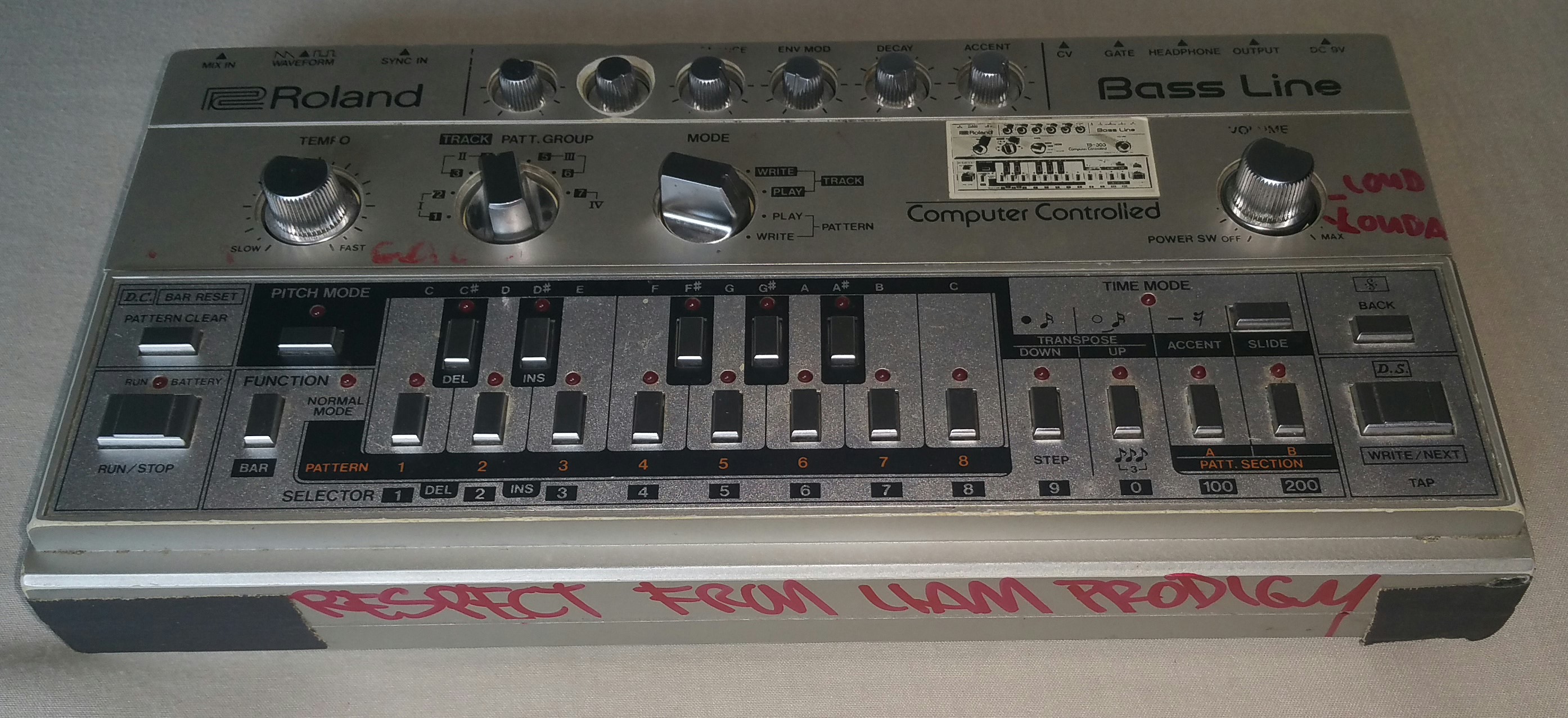
Roland related articles
01 May 1992 The Music Technology Magazine
The Lone Raver
01 Feb 1993 Future Music
Prodigious talent
01 Oct 1996 Sound On Sound
Liam Howlett • The Prodigy & Firestarter
01 Mar 1997 The Mix
Playing with fire!
01 Jan 1999 Power On
Catching Up With The Prodigy
01 Dec 2000 Future Music
DIY Prodigy
01 Oct 2004 Sound On Sound
Liam Howlett: Recording Always Outnumbered, Never Outgunned
29 Nov 2004 Korg magazine
Never Outgunned: Liam Howlett
01 Feb 2005 Keyboard Magazine
Trim the Fat
01 Oct 2010 Sound On Sound
Jon Burton: Mixing & Recording The Prodigy Live
18 May 2015 MusicTech magazine
Landmark Productions: The Prodigy – The Fat of the Land
02 Nov 2018 The Guardian
The Prodigy: No Tourists review – music for the jaded generation
30 Jul 2019 MusicTech magazine
Prodigy engineer/co-producer Neil Mclellan remembers the Jilted Generation sessions
If you know something else about this piece of gear, please mail to me or contact me via feedback form.
